Last Updated on April 11, 2025 by Lucas
Craving a creamy dessert that aligns with your health goals? This healthy cheesecake recipe is your answer! Crafted with protein-rich Greek yogurt and naturally sweetened with maple syrup, it offers indulgent flavor without refined sugars. Ready in 75 minutes, it’s perfect for busy days when you need a quick, guilt-free treat. Whether you’re following a gluten-free diet or simply seeking a lighter option, this cheesecake delivers on taste and nutrition. Let’s dive into this delightful recipe!.
Key Benefits
Indulging in a dessert doesn’t have to derail your health goals. This healthy cheesecake recipe offers a delightful balance between taste and nutrition. Here’s how it stands out:
Guilt-Free Indulgence
Satisfy your sweet tooth without the added guilt. This cheesecake is crafted to be low in calories and free from refined sugars, making it a smart choice for those mindful of their sugar intake. Opting for natural sweeteners helps maintain stable blood sugar levels, supporting overall well-being.
Protein-Packed
Each serving is rich in protein, thanks to the inclusion of Greek yogurt and cottage cheese. These ingredients not only contribute to a creamy texture but also provide essential amino acids that support muscle maintenance and satiety. A 100-gram serving of cottage cheese contains approximately 11.5 grams of protein, while the same amount of Greek yogurt offers about 8.7 grams.[1]
Quick & Easy
Time is of the essence, and this recipe respects that. With a preparation and cooking time totaling just 75 minutes, it’s perfect for busy individuals seeking a homemade dessert without the lengthy process.
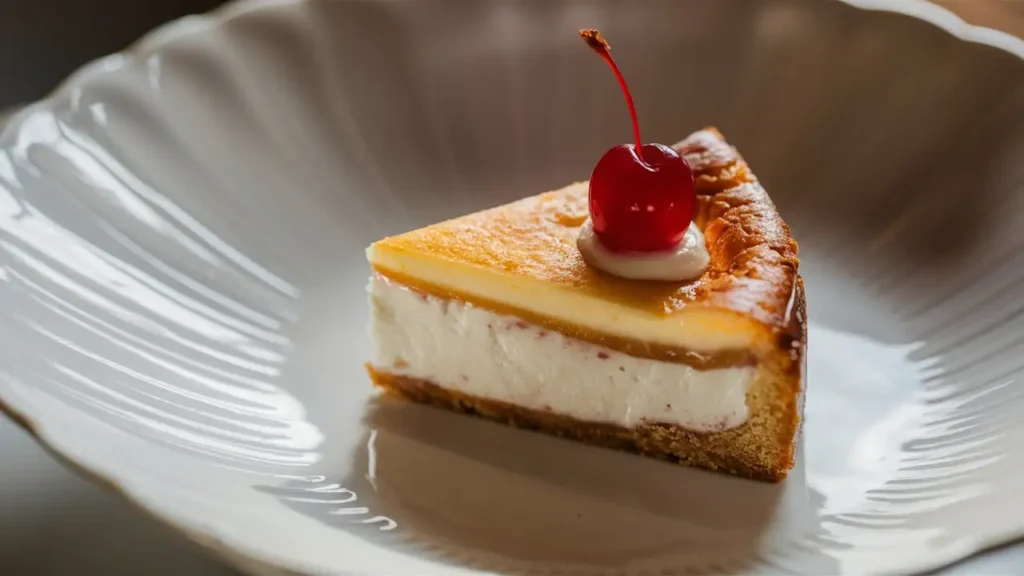
Diet-Friendly
Catering to various dietary needs, this cheesecake is suitable for gluten-free and low-carb diets. Using almond flour for the crust not only eliminates gluten but also adds healthy fats and fiber. Almond flour is known for its beneficial nutrients, including omega-3 fatty acids, which support heart health.
By incorporating these elements, this healthy cheesecake becomes more than just a treat—it transforms into a nourishing option that aligns with your wellness journey.
Ingredients
Before you begin crafting this delightful healthy cheesecake, gather the following ingredients. Each component has been selected to ensure a balance of taste, texture, and nutritional benefits.

For the Crust:
- Graham Cracker Crumbs or Almond Flour: Traditional graham cracker crumbs offer a classic flavor, while almond flour provides a gluten-free alternative that’s rich in protein and healthy fats.
- Melted Coconut Oil or Unsalted Butter: These act as binding agents, giving the crust its cohesive texture. Coconut oil imparts a subtle tropical note, whereas unsalted butter offers a creamy richness.
- Optional: Medjool Dates for Natural Sweetness: Incorporating finely chopped Medjool dates can naturally sweeten the crust, reducing the need for added sugars. They also contribute to a chewy texture and are a good source of fiber.
For the Filling:
- Low-Fat Cream Cheese or Neufchâtel Cheese: Both options provide the creamy base for the cheesecake. Neufchâtel cheese has a slightly lower fat content and a subtle tang, enhancing the dessert’s flavor profile.
- Plain Greek Yogurt or Cottage Cheese: Greek yogurt adds a velvety texture and is high in protein, calcium, and probiotics, supporting digestive health. Cottage cheese offers a similar protein boost with a slightly different texture.
- Pure Maple Syrup or Monk Fruit Sweetener: These natural sweeteners enhance the filling’s sweetness without relying on refined sugars. Maple syrup adds a rich, earthy flavor, while monk fruit sweetener is a calorie-free option suitable for low-carb diets.
- Fresh Lemon Juice and Vanilla Extract: Lemon juice introduces a hint of acidity, balancing the sweetness and adding a refreshing note. Vanilla extract imparts a warm, aromatic depth to the filling.
- Eggs: Essential for binding the filling, eggs contribute to the cheesecake’s structure and provide additional protein.[2]
- Cornstarch or Tapioca Flour: These thickeners ensure the filling sets properly, giving the cheesecake its characteristic firmness. Tapioca flour is a gluten-free alternative to cornstarch.
By thoughtfully selecting these ingredients, you’ll create a cheesecake that’s not only delicious but also aligns with health-conscious choices. Each component plays a pivotal role in achieving the perfect balance of flavor, texture, and nutritional value.
Instructions
Creating a healthy cheesecake at home is both rewarding and straightforward. By following these steps, you’ll craft a dessert that’s as nutritious as it is delicious.

1. Prepare the Crust
- Combine Ingredients: In a mixing bowl, blend your chosen crust ingredients: graham cracker crumbs or almond flour, melted coconut oil or unsalted butter, and, if desired, finely chopped Medjool dates for natural sweetness.
- Mix Thoroughly: Ensure the mixture achieves a sand-like consistency, indicating it’s well combined.
- Press into Pan: Transfer the mixture into a springform pan, pressing it firmly and evenly across the bottom to form a solid base.
- Optional Pre-Bake: For added firmness, consider pre-baking the crust at 325°F (163°C) for 5–7 minutes.
2. Mix the Filling
- Blend Dairy Base: In a large bowl, combine low-fat cream cheese or Neufchâtel cheese with plain Greek yogurt or cottage cheese. Blend until smooth and creamy.
- Incorporate Sweeteners: Add pure maple syrup or monk fruit sweetener to the mixture, adjusting the quantity to suit your taste.
- Add Flavorings: Stir in fresh lemon juice and vanilla extract, ensuring they’re evenly distributed.
- Integrate Eggs and Thickener: Gently beat in the eggs one at a time, followed by cornstarch or tapioca flour, mixing until just combined to avoid overbeating.
3. Assemble and Bake
- Pour Filling: Carefully pour the prepared filling over the crust in the springform pan, smoothing the top with a spatula.
- Bake: Put the pan into a preheated oven at 325°F (163°C) and bake for about 25 minutes. The cheesecake should look firm with a gentle wobble in the middle.
4. Cool and Refrigerate
- Initial Cooling: Remove the cheesecake from the oven and allow it to cool at room temperature for about an hour.
- Refrigerate: Once cooled, cover the cheesecake and refrigerate for at least 2 hours, or until fully chilled and set.
By following these steps, you’ll create a healthy cheesecake that doesn’t compromise on flavor or texture. Enjoy your homemade dessert as a delightful end to any meal or a satisfying snack during the day.
Pro Tips and Variations
Elevate your healthy cheesecake with these thoughtful tips and creative variations. Whether you’re catering to dietary preferences or simply seeking new flavors, these suggestions will guide you to a delightful dessert experience.

Flavor Enhancements
- Fresh Berry Toppings: Top your cheesecake with a medley of fresh berries such as strawberries, blueberries, or raspberries. Their natural sweetness and vibrant colors add both flavor and visual appeal.
- Honey Drizzle: A light drizzle of honey over the cooled cheesecake can enhance its sweetness and introduce a subtle floral note.
- Citrus Zest: Incorporate lemon or orange zest into the filling to infuse a refreshing citrus aroma and taste.
Crust Alternatives
- Nut-Based Crust: For a gluten-free option, consider using a crust made from finely ground nuts like almonds or pecans mixed with a touch of coconut oil. This not only provides a crunchy texture but also adds a rich, nutty flavor.
- Oat and Walnut Crust: Combine oats with walnuts and a hint of honey to create a wholesome and hearty crust that complements the creamy filling.
Sweetener Swaps
- Agave Nectar: A plant-based sweetener that offers a mild flavor and blends seamlessly into the filling.
- Stevia: A natural, zero-calorie sweetener suitable for those monitoring their sugar intake.[3]
- Coconut Sugar: Provides a caramel-like sweetness and is a less refined alternative to traditional sugars.[4]
Dairy-Free Version
- Cream Cheese Substitute: Opt for dairy-free cream cheese alternatives made from almond or cashew bases. Brands like Kite Hill offer options that closely mimic the texture and taste of traditional cream cheese.
- Yogurt Alternative: Use plant-based yogurts such as coconut or almond yogurt to maintain the creamy consistency of the filling.
By incorporating these tips and variations, you can customize your healthy cheesecake to suit various tastes and dietary needs, ensuring a delightful dessert for everyone.
Serving Suggestions
Elevate your healthy cheesecake experience with thoughtful presentation and pairing ideas. These suggestions not only enhance the visual appeal but also complement the flavors, making each bite more enjoyable.
Portion Control
To maintain the health-conscious nature of this dessert, consider slicing the cheesecake into individual servings. This approach aids in mindful eating and simplifies serving during gatherings.
Presentation
A visually appealing dessert can heighten the anticipation and enjoyment. Garnish each slice with a touch of lemon zest or a fresh mint sprig. These additions introduce a burst of color and a hint of freshness that pairs well with the creamy texture of the cheesecake.
Pairings
Complement the rich, creamy flavor of the cheesecake with a light accompaniment. A cup of herbal tea, such as chamomile or peppermint, can cleanse the palate. Alternatively, a side of fresh fruit salad adds a refreshing contrast, enhancing the overall dessert experience.
By incorporating these serving suggestions, you can transform a simple healthy cheesecake into a delightful and memorable treat.
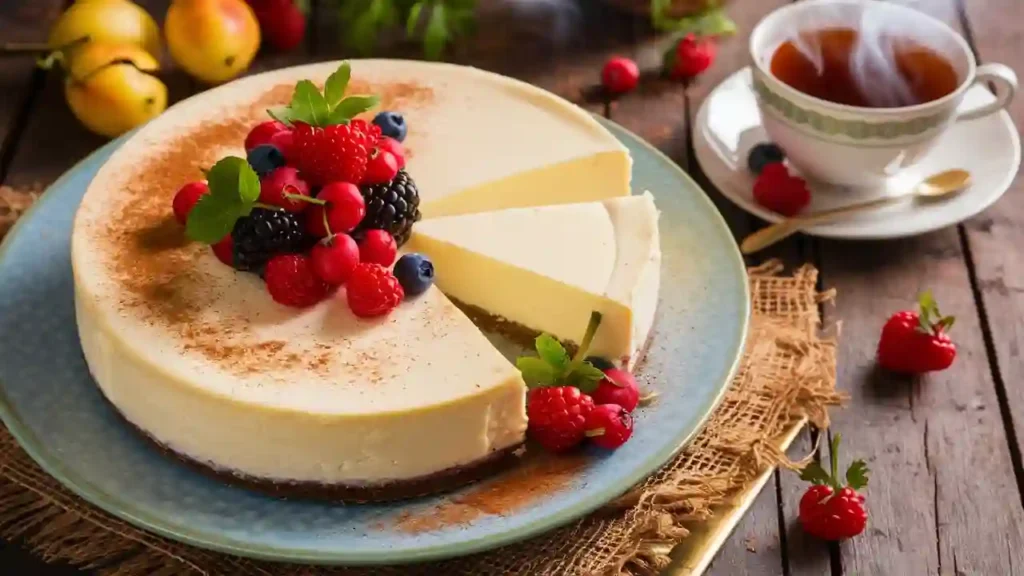
Conclusion
This healthy cheesecake recipe offers a delightful balance between indulgence and nutrition. Its quick preparation time and versatile ingredients make it a go-to dessert for health-conscious individuals. Enjoy the creamy texture and rich flavor without compromising your dietary goals.
By incorporating protein-rich ingredients like Greek yogurt and cottage cheese, this dessert not only satisfies your sweet cravings but also contributes to your daily nutritional intake. Greek yogurt, for instance, is an excellent source of protein, calcium, and vitamin B12, supporting muscle health and bone density .
Moreover, opting for natural sweeteners and whole-food crust alternatives ensures a lower intake of refined sugars and unhealthy fats, aligning with a balanced diet. This approach allows you to indulge mindfully, making this cheesecake a suitable option for those monitoring their sugar and fat consumption.
In essence, this healthy cheesecake stands as a testament to the idea that desserts can be both delicious and nourishing. It’s a perfect example of how thoughtful ingredient choices can transform a traditional treat into a health-conscious delight.
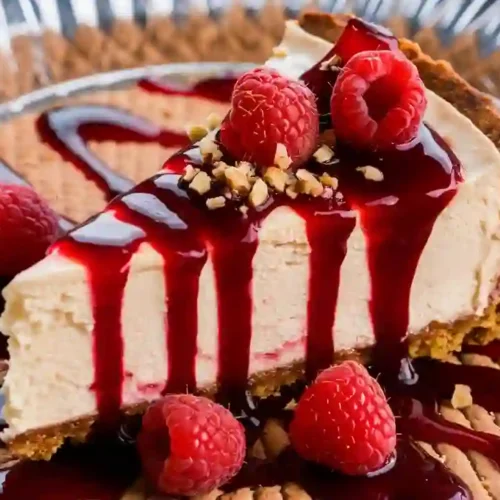
Healthy Cheesecake Recipe
Ingredients
For the crust:
- 1½ cups graham cracker crumbs can use gluten-free
- 7 large pitted Medjool dates or 14 Deglet Noor dates
- 1/3 cup melted butter vegan or standard
For the filling:
- 2 blocks 16 oz low-fat cream cheese, softened (can substitute with full-fat or vegan cream cheese)
- 1 cup plain nonfat Greek yogurt see note for dairy-free options
- ½ cup pure maple syrup or preferred natural sweetener
- 2 large eggs
- 1 tablespoon lemon juice
- 2 teaspoons vanilla extract
- 1 tablespoon cornstarch or arrowroot/tapioca flour
Instructions
Prepare the crust:
- In a food processor, blend graham cracker crumbs and dates until a sticky mixture forms. Press this mixture into the base of a greased 9-inch springform pan. Bake at 325°F (163°C) for 10 minutes.
Prepare the filling:
- In a large bowl, beat softened cream cheese until smooth. Add Greek yogurt, maple syrup, eggs, lemon juice, and vanilla extract. Mix until well combined. Stir in cornstarch until the batter is smooth.
Assemble the cheesecake:
- Pour the filling over the pre-baked crust. Smooth the top with a spatula.
Bake:
- Place the pan on the center rack and bake at 325°F (163°C) for 50-60 minutes, or until the center is set and a toothpick inserted comes out clean.
Cool:
- Let the cheesecake cool to room temperature. Then, refrigerate for at least 4 hours, preferably overnight, to allow flavors to meld and texture to firm up.
Notes
- Calories: Approximately 200
- Protein: 12g
- Carbohydrates: 25g
- Fats: 8g
- Fiber: 3g
- Sugar: 12g
FAQs
Can I make this cheesecake ahead of time?
Absolutely, making this healthy cheesecake ahead of time is a great idea. Preparing it a day early helps the flavors develop and the texture firm up nicely. Just cover and refrigerate it until serving.
Is it possible to freeze leftovers?
Absolutely. Cheesecake freezes well, preserving its taste and texture when properly stored.
Here’s how:
Cool Completely: Ensure the cheesecake has cooled to room temperature before freezing.
Slice (Optional): Cutting it into individual portions makes thawing easier.
Wrap Well: Use plastic wrap followed by aluminum foil to tightly wrap the cheesecake or slices, preventing freezer burn.
Storage: Place the wrapped cheesecake in a shallow container and store it in the freezer for up to 1 to 2 months.[5]
To thaw:
Refrigerator Method: Transfer the desired portion to the refrigerator and let it thaw overnight.
Quick Thaw: For a faster option, unwrap and let it sit at room temperature for about 20 to 45 minutes.
Can I use a different sweetener?
Certainly. Feel free to substitute the recommended sweetener with your preferred natural alternative, such as stevia, monk fruit sweetener, or agave nectar. Just be mindful of the sweetness level, as different sweeteners vary in potency.
What if I don’t have a springform pan?
No worries. You can use a regular cake pan instead. To ensure easy removal:
Grease the Pan: Generously grease the bottom and sides with butter or non-stick spray.
Line the Bottom: Place a circle of parchment paper at the bottom of the pan to prevent sticking.
These steps will help you achieve a smooth release without compromising the cheesecake’s shape.
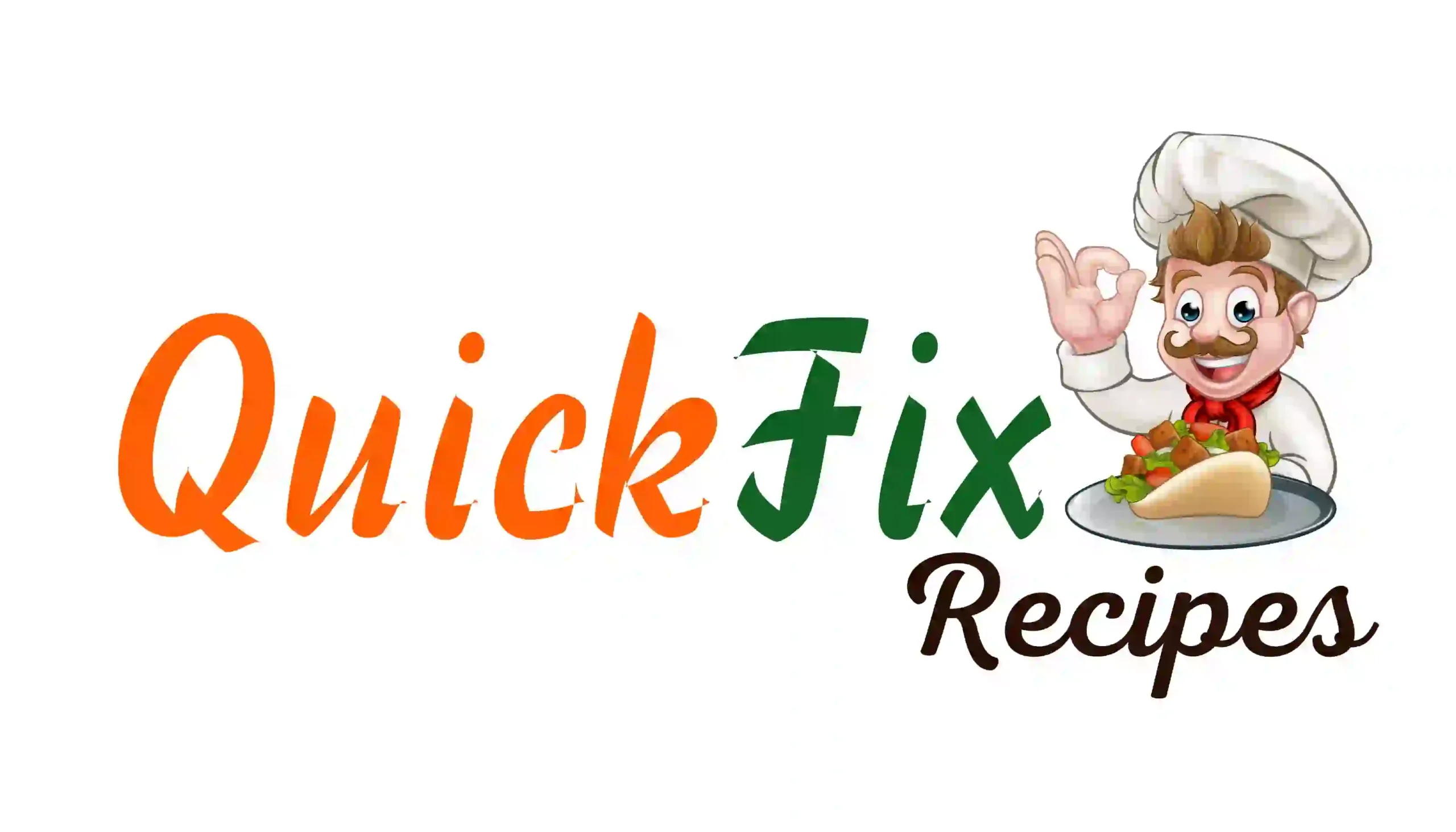
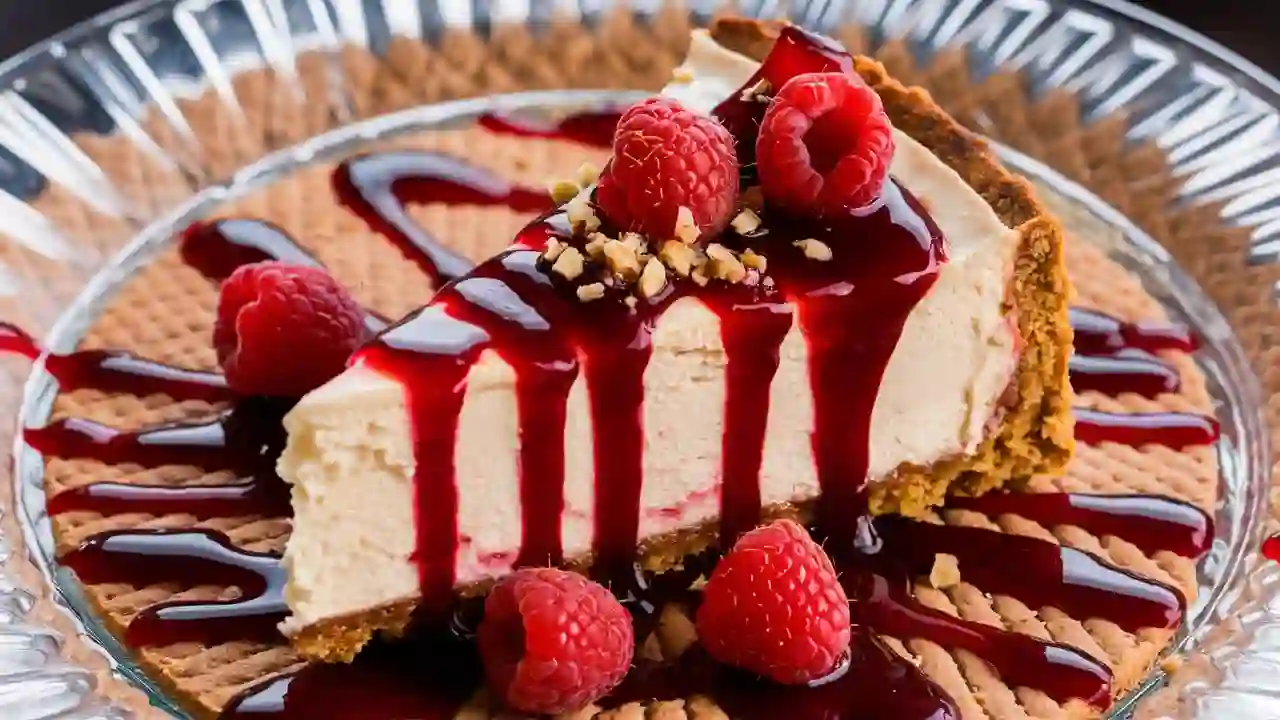
1 thought on “Healthy Cheesecake Recipe”